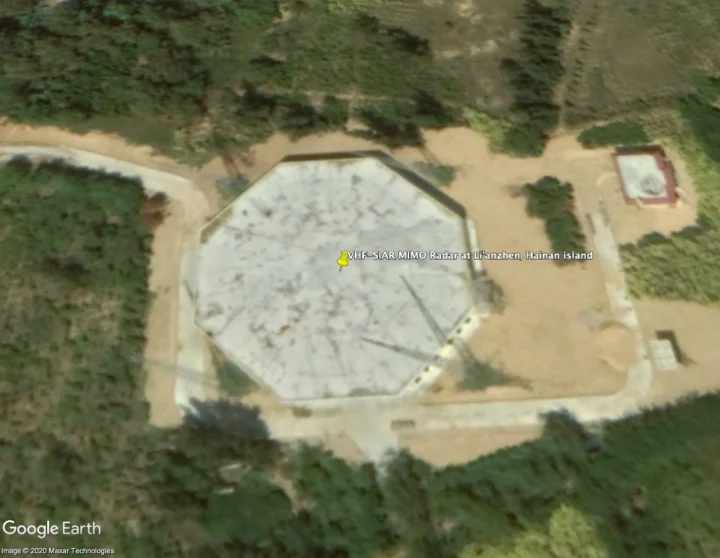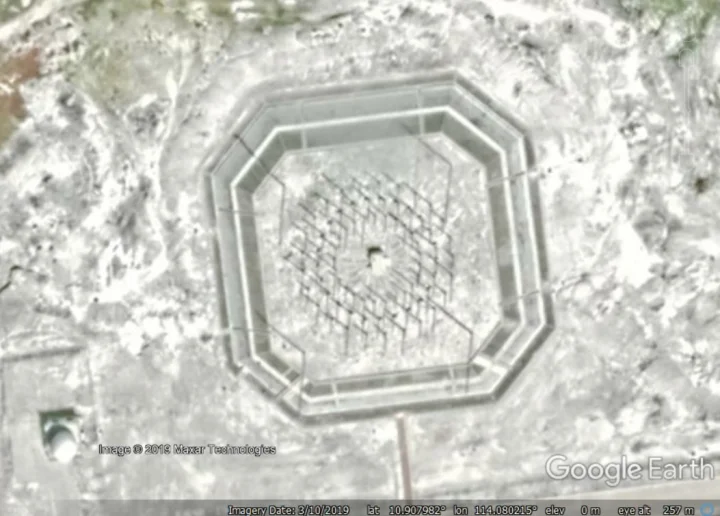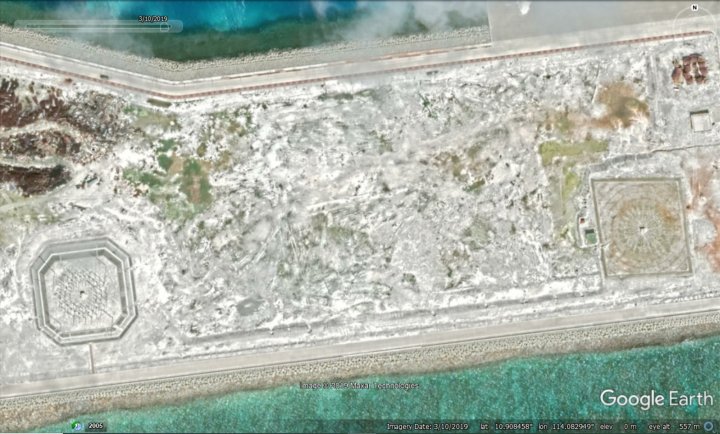Military/Intelligence Bulletin 02/2020 – What is China up to?
China appears to be deploying unusual antenna arrays in coastal locations.
Several new antenna arrays have been identified in coastal locations and they appear to be low-frequency VHF SIAR/MIMO.
They are capable of detecting aircraft which includes stealth variants. The three that have been deployed on the coast could also be used for detecting maritime assets.
Locations:
Test facility, Li’anzhen, Hainan island, South Chine Sea. This appears to be a possible test site for a synthetic impulse and aperture radar (SIAR). Multiple input multiple output (MIMO). The site consists of four vertical masts boxing in a multiple antenna array. There is a possible test array south east of this structure
.

A possible synthetic impulse and aperture radar (SIAR) complex near Li’anzhen on Hainan Island, South China Sea. This shows an unfinished SIAR. You can see the four lattice towers and top right a Radome position. There is no multiple antenna array in position yet.
CETC38 – Number 38 Research Institute of the China Electronics Technology Group Corporation. Test complex near Hefei in China.
Shacheng Harbour, near Fuding, Fujian province, eastern China. The systems are composed of three rings of 25 antennas totalling some 45 metres in diameter. The antennas are differing in height within each ring. There are four large frame-constructed masts outside the main circle. But there are differences at the centre of the arrays. At the new site at Subi Reef, there is a five metre tall building. Although there is no mast visible, it is likely that the building contains one. At the Li’anzhen test array, there is a central frame-constructed mast of approximately two-metres in height. It is folded down and can be raised to 10 metres in height. The central configuration is the same at the CETC38 site.
.

A possible synthetic impulse and aperture radar (SIAR) complex at Shacheng harbour, near Fuding, Fujian province, eastern China.A Radome can be seen bottom left and the support complex bottom right. The circular area is a possible operational SIAR.
Subi Reef in the South China Sea.

Possible synthetic impulse and aperture radar installation on Subi Reef in the South China Sea. Radome bottom left. To the far right, off picture, lies a deactivated SIAR.
 Possible synthetic impulse and aperture radar installation on Subi Reef in the South China Sea. To the far right, lies a deactivated SIAR.
Possible synthetic impulse and aperture radar installation on Subi Reef in the South China Sea. To the far right, lies a deactivated SIAR.
Purpose.
SIAR radars on their own are an early-warning system and not designed to be used with air defence weapons. With a range out to around 300 kilometres for an incoming aircraft at altitude, it would not provide substantial advanced warning over systems already in place.
It could be used to intercept, track and provide basic information before handing over to an air defence system, such as HQ-64. The advantage it could provide, is that the aircraft would be unaware that it was being tracked up until the last moment. This could explain their current positions, located alongside pre-existing air defence radars.
So, what we have is a potentially undetectable lower-frequency VHF SIAR/MIMO radar capable of identifying aircraft, including stealth aircraft, as well as maritime assets.
Post copyrighted to Harvey Black



















